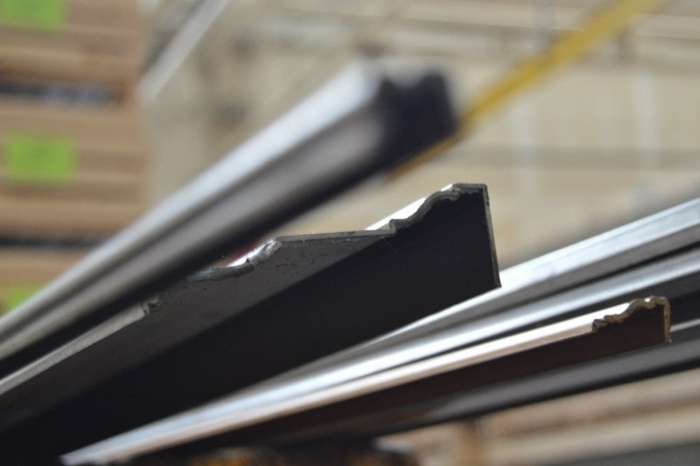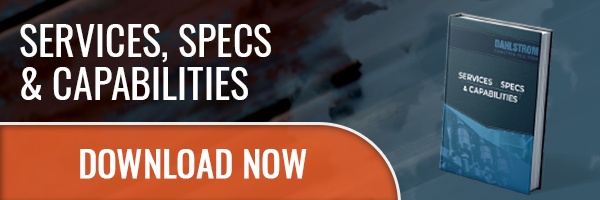Roll Forming Tooling Design: Build In-House or Outsource?

Which charges higher prices for metal fabrication -- a company that has in-house roll forming tooling design capabilities or one that outsources it?
Perhaps a more important question should be, “Which fabricator will save the most time and do a better job?” While the up-front price of roll forming tooling matters, the end goal is to have quality roll formed components.
For custom roll formers and those who use their services, whether to keep roller die tool making in-house or outsource it is a business decision. Yet there’s no simple answer -- you’ll have to account for several variables to figure out which is more cost-effective.
Designing In-House Vs. Outsourcing
When weighing the pros and cons of roll forming machine tooling, roll formers should evaluate all factors carefully before deciding whether to keep the design and manufacture process in-house or outsource it.
Roll form tooling is reasonably expensive, depending on the shape’s complexity. Roll form tool design fundamentals will tell you easy shapes are cheaper, while more complex shapes are more expensive. Roll form tooling material type and thickness also matter. When more work needs to happen to form the metal, more forming stations (and tools) are necessary.
In-house Roll Forming Tooling
Creating roll form tooling in-house offers several advantages to roll formers and their customers:
- Control – It provides greater control over the entire process from start to finish, as roll formers have direct oversight over every part of the design and manufacturing process.
- Controlling Roll Forming Cost – In-house design and manufacture of roll forming tools generally costs less when staff have enough work. Tooling in-house may also be more cost-effective than outsourcing since roll formers avoid overhead expenses associated with third-party fabrication or shipment costs.
- Customization – Roll formers can utilize their own specialized design software and processes to create roll formed tools custom-made for specific needs and requirements.
- Speed – Producing roller dies in-house means that roll forming projects can proceed much faster than if the dies were outsourced, which could result in significant cost savings when dealing with larger orders or tight deadlines.
- Flexibility – By keeping roll forming tooling in-house, roll formers have greater flexibility when it comes to making changes or adjustments on the fly during production. Whether this involves tweaking a design element or altering heat treating parameters before production begins, having direct access to all materials and processes allows for quick adaptations that help reduce downtime and maximize efficiency.
In-House Risks
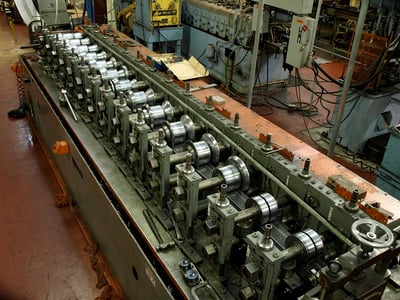 Keeping too much in-house may be risky. Harm can come from trying to do it all, especially if some of that “all” consists of time-consuming tasks that in-house staff don’t specialize in. Risks include:
Keeping too much in-house may be risky. Harm can come from trying to do it all, especially if some of that “all” consists of time-consuming tasks that in-house staff don’t specialize in. Risks include:
- Staff – In-house roll forming tooling means hiring at least one designer and one machinist. It’s a significant expense – roughly $150,000/yr., depending on your location.
- Skill – If staff lack the knowledge or skill required for manufacturing the tooling, they may end up with subpar results that could lead to costly errors. It will probably take training to get your crew up to speed on roll form tool design fundamentals.
- Cost – The initial investment in state of the art designing and manufacturing equipment can be quite substantial for manufacturers who don’t already have the resources on hand.
Outsourcing Roll Forming Tooling
Outsourcing your roll forming tooling has its advantages as well:
- Save Time – Outsourcing time-consuming but important tasks a company doesn’t do well can free up time to flex your strengths. This can be a wise strategic move if your company is strapped for time.
- Save Resources – Avoiding the in-house overhead costs associated with owning and operating roll forming tooling machinery allows a manufacturer to funnel those savings into resources such as R&D, training, or even marketing.
- Access Expertise – Toolers specializing in the design and manufacture of roller dies provide outsourcing companies access to a wide range of specialized machinery and processes that are unavailable in-house. Roll formers can benefit from their expertise and experience in designing and fabricating dies.
- Flexibility – Since most outsourced projects are billed on an hourly or job basis rather than being tied into long-term contracts, if deadlines change or budgets are reduced mid-project, adjustments may be made without incurring additional fees or charges.
Outsourcing Risks
The chance always exists that the roll form tooling supplier won’t live up to its advertised capabilities. Outsourcing risks include:
- Quality Control – Since roll formers have little control over third-party fabrication processes, there is a greater risk that their roll forming tools may be subpar due to improper heat treatments or a lack of quality assurance protocols.
- Lead Times – Depending on the size and complexity of their project, roll formers could experience longer turnaround times as opposed to creating tools in-house.
- Unreliable Vendors – If roll formers partner with a third-party supplier who is unable to provide consistent quality results or timely deliveries, it can lead to costly problems down the line.
Is In-House Tooling Worth the Investment?
Will the balance sheet show that hiring designers and machinists and acquiring fancy equipment to make roll formed shapes is efficient in the long run?
Remember that the ability to design and make roll tooling sets in-house has a lot to do with the fabricator’s size. Larger shops are better able to do it than smaller shops. Larger shops can offer lower prices by keeping the work in-house. Smaller companies might find that they don’t have enough work to support the added staff.
So, can outsourcing be beneficial?
At the very least you should approach your roll forming vendor about handling the tooling. The vendor may have existing tooling that will work for your project, saving you the up-front cost. An experienced partner will also have extensive in design considerations, such as using the proper roll form tooling materials.
WHY EVEN ROLL FORMERS THEMSELVES OUTSOURCE SOMETIMES
Here’s an imaginary scenario that shows how some roll forming companies actually outsource most of their own tool building and design. The reason they do this extra step of outsourcing to a specialized roll forming tooling manufacturer? To provide you with a lower quote than they could otherwise.
Let’s say a mid-sized roll former decides to outsource. They hand off tooling design and build to a third party that can justify hiring designers and machinists because they handle outsourced jobs for several other roll formers too.
Why might a small or mid-sized roll former do this?
Sometimes three new tool sets are needed at one time. Other times, there could be several months when a tooling designer and machinist would sit on their hands. And if an especially busy time does come, the vendor may need to add additional staff anyway.
If the cost of hiring a designer and machinist is $75,000 a person, and the need for designing new tooling is so unpredictable, why bother?
That’s why some roll formers prefer to use that $150,000 a year another way. How? Using it to discount tool pricing for strategic partnering type customers.
By spreading that $150,000 in labor savings throughout the year to account for outsourcing costs, suddenly your tooling costs are roughly the same as those who use roll formers with in-house preferences.
Every Situation is Unique
Sometimes, the answer to whether to go in-house or to outsource isn’t obvious.
Smart manufacturers look at all the angles. When looking for the right roll forming tooling suppliers, look past whether a company keeps tooling duties in-house or outsources them. Instead, find out why the choice has been made and how it might benefit your project’s budget and quality.
Help With Your Decision
Download our free Services, Specs & Capabilities guide to see how Dahlstrom can help you with your next roll forming project.
(This article was originally published in November 2018 and was recently updated.)
You May Also Like
These Related Stories
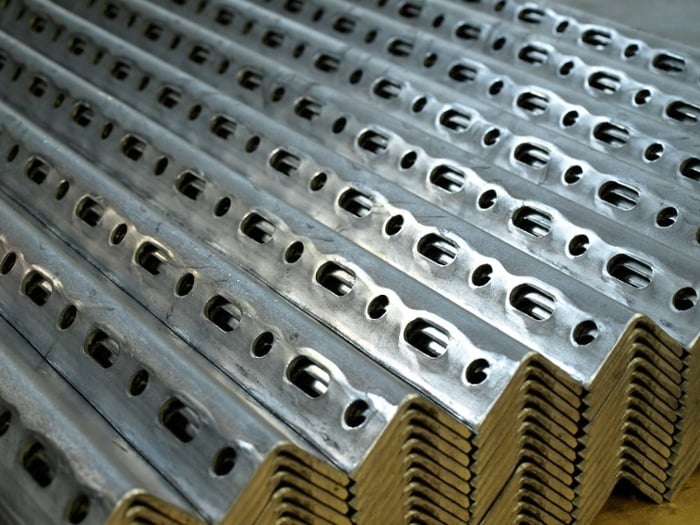
Roll Forming Services: Your OEM & Architectural Solution
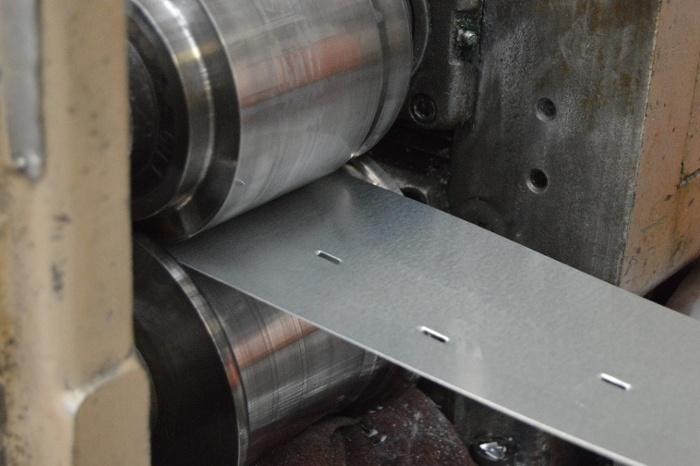
4 Steps to Controlling Roll Forming Costs
